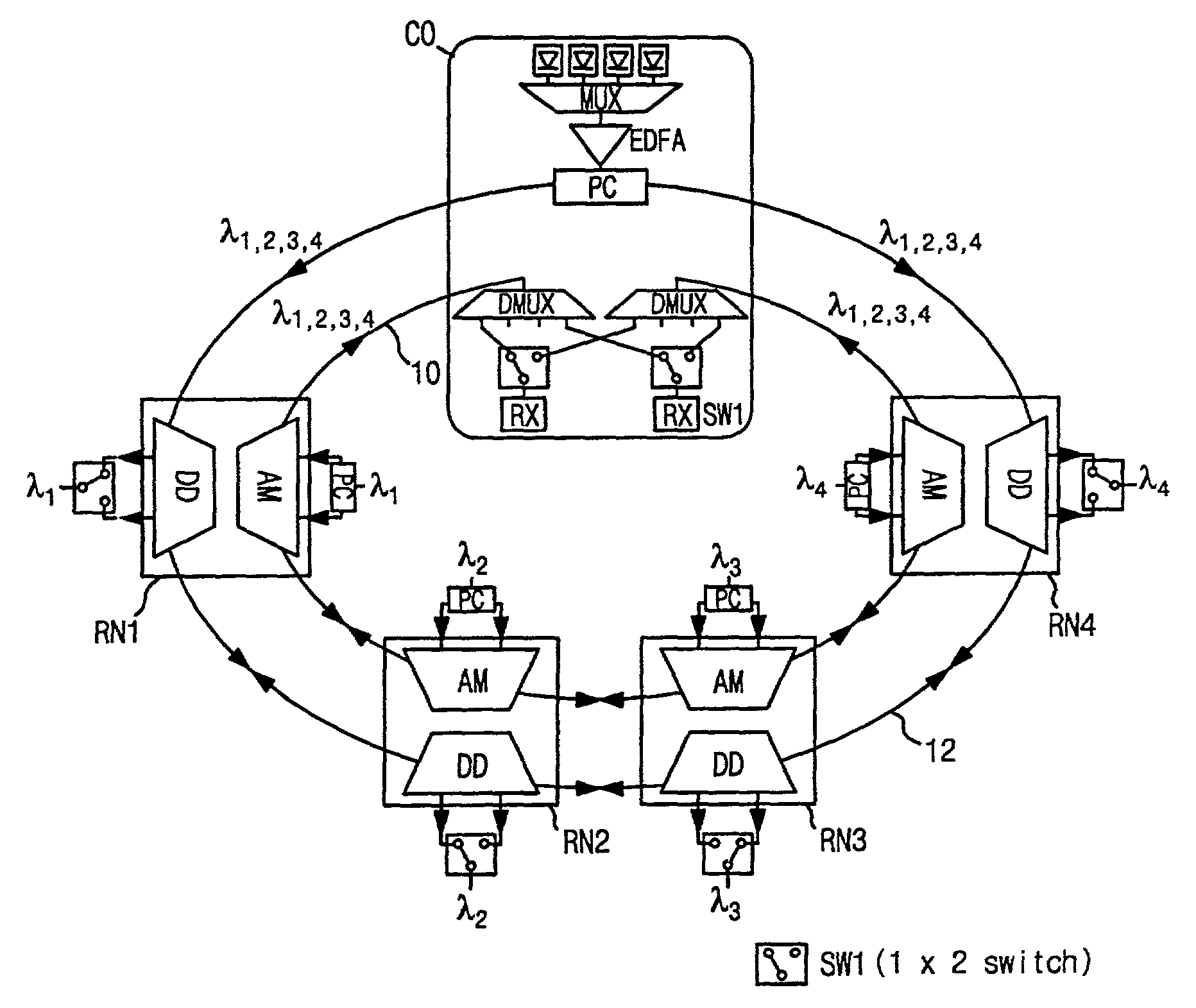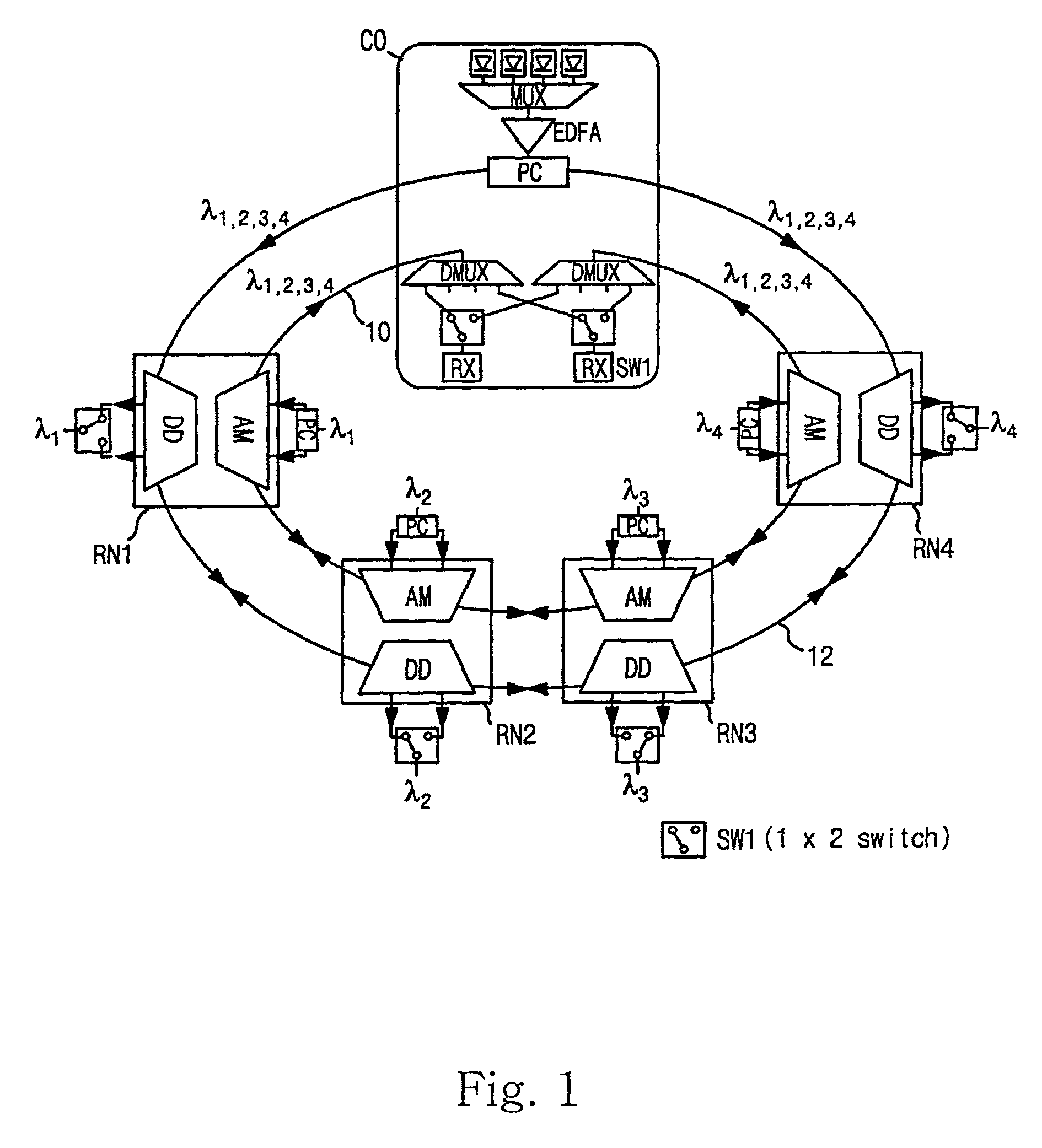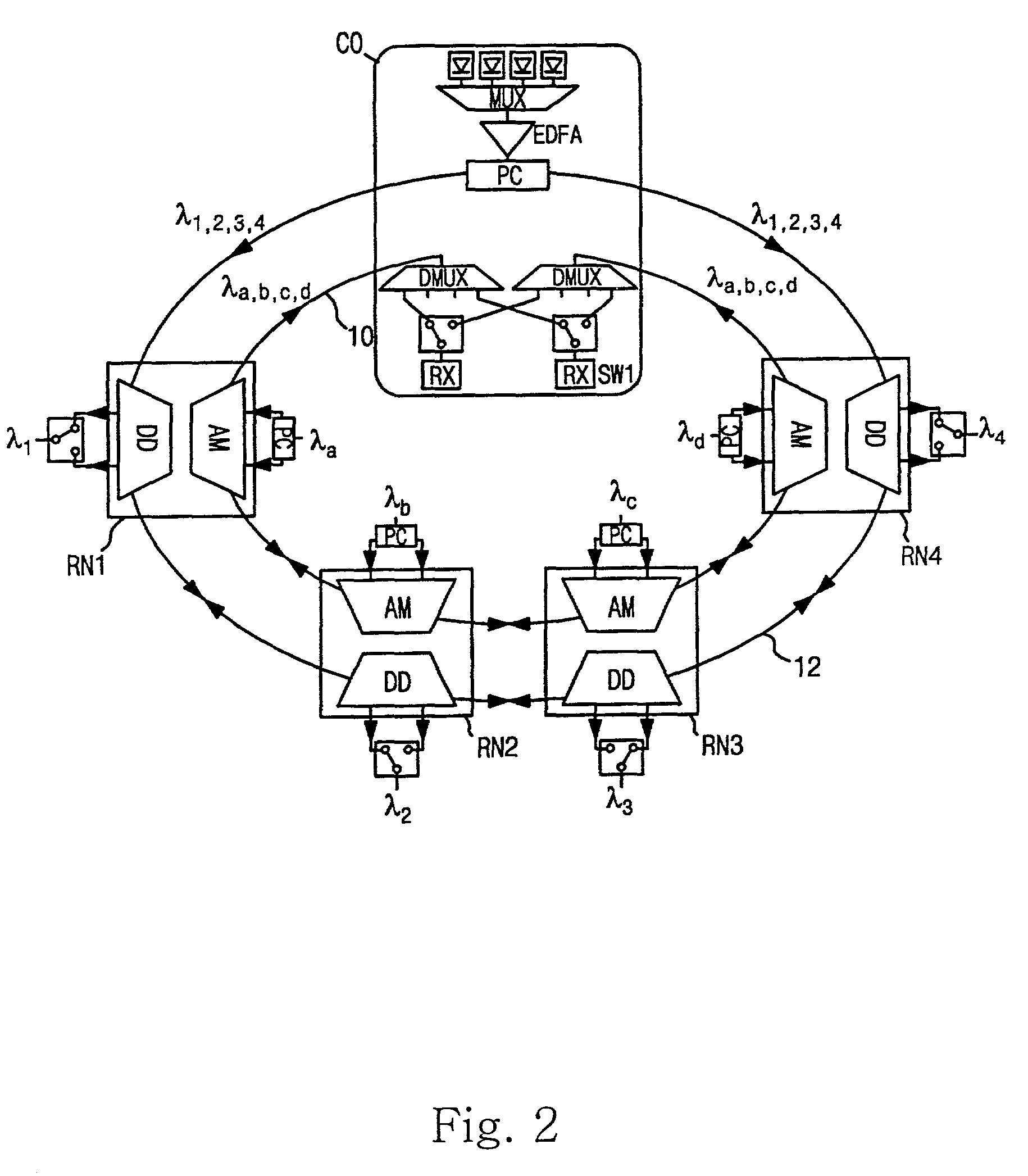Bidirectional wavelength division multiplexed self-healing ring network composed of add fiber and drop fiber
a self-healing ring network and wavelength division technology, applied in multiplex communication, instruments, optical elements, etc., can solve the problems of complex structure of the remote node, deteriorating signal quality, and using expensive optical amplifiers
- Summary
- Abstract
- Description
- Claims
- Application Information
AI Technical Summary
Benefits of technology
Problems solved by technology
Method used
Image
Examples
first embodiment
[0041]FIG. 1 is a diagram showing a configuration of a bidirectional wavelength division multiplexed self-healing ring network in accordance with the present invention. The bidirectional wavelength division multiplexed self-healing ring network includes two optical fibers that constitute an add fiber 10 and a drop fiber 12, respectively.
[0042]A central office CO is divided into a wavelength division multiplexed optical receiving part and a wavelength division multiplexed optical transmission part. The wavelength division multiplexed optical transmission part is connected to the drop fiber 12 through its both transmission terminals, while the wavelength division multiplexed optical receiving part is connected to the add fiber 10 through its both receiving terminals.
[0043]Remote nodes RN1, RN2, RN3 and RN4 are each composed of an add multiplexer AM and a drop demultiplexer DD. The add fiber 10 is connected to both terminals of the add multiplexer AM, while the drop fiber 12 is connect...
second embodiment
[0054]FIG. 2 is a diagram showing a configuration of a bidirectional wavelength division multiplexed self-healing ring network in accordance with the present invention. This drawing shows the case, where the wavelengths of signals added are different from the wavelengths of signals dropped.
[0055]The wavelengths of signals added in remote nodes RN1, RN2, RN3 and RN4 can be made to be different from the wavelengths of signals dropped in remote nodes RN1, RN2, RN3 and RN4 in such a way that wavelengths λ1, λ2, λ3 and λ4 of wavelength division multiplexed optical signals transmitted from the central office CO to the remote nodes RN1, RN2, RN3 and RN4 are made to be different from wavelengths λa, λb, λc and λd of wavelength division multiplexed optical signals transmitted from the remote nodes RN1, RN2, RN3 and RN4 to the central office CO.
[0056]A path of the optical signals transmitted from the remote nodes RN1, RN2, RN3 and RN4 to the central office CO is separated from a path of the o...
third embodiment
[0066]FIG. 4 is a diagram showing a bidirectional wavelength division multiplexed self-healing ring network in accordance with the present invention. The wavelength division multiplexed optical signals transmitted bidirectioally have the same wavelength but are modulated with different data.
[0067]Two groups of optical signals transmitted bidirectionally from the central office CO are allowed to have the same wavelengths, and modulated with different data by two kinds of optical modulators (not shown). A pair of differently modulated signals having the same wavelength are applied to two terminals of a 2×2 optical switch SW2, and two other terminals of the 2×2 optical switch SW2 are connected to the assigned input terminals of two multiplexers MUXs, respectively. The 2×2 optical switch SW2 establishes a path of optical signals so that wavelength signals modulated with the higher priority data may be transmitted in a counterclockwise direction in a normal state.
[0068]Accordingly, two g...
PUM
 Login to View More
Login to View More Abstract
Description
Claims
Application Information
 Login to View More
Login to View More - R&D
- Intellectual Property
- Life Sciences
- Materials
- Tech Scout
- Unparalleled Data Quality
- Higher Quality Content
- 60% Fewer Hallucinations
Browse by: Latest US Patents, China's latest patents, Technical Efficacy Thesaurus, Application Domain, Technology Topic, Popular Technical Reports.
© 2025 PatSnap. All rights reserved.Legal|Privacy policy|Modern Slavery Act Transparency Statement|Sitemap|About US| Contact US: help@patsnap.com



